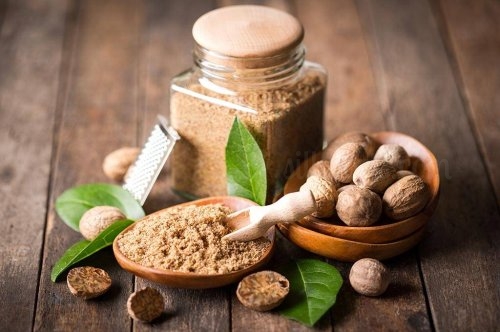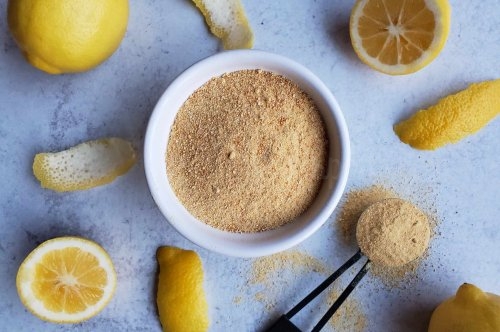
What is Garlic?
Garlic is a species of bulbous flowering plant in the genus Allium. Its close relatives include the onion, shallot, leek, chive, Welsh onion and Chinese onion. It is native to Central Asia and northeastern Iran and has long been used as a seasoning worldwide, with a history of several thousand years of human consumption and use. It was known to ancient Egyptians and has been used as both a food flavoring and a traditional medicine. China produces 76% of the world's supply of garlic.
Garlic is an easy plant to grow which can be planted throughout the year in climates that are mild. Garlic mostly thrives in sunny regions which have well-drained soils that are loose and dry. Large bulbs whose cloves can be easily separated are the best to use for planting during the cultivation of garlic. In 2015 the world production of garlic was estimated at 25 million with China constituting of 80% of the total production. India came in second while other countries accounted for less than 0.5 million tons per year. In the United States, production of garlic is mostly focused in Gilroy, California dubbed as ‘the garlic capital of the World’.
Garlic is one of 700 species in the Allium or onion family. The two different types of garlic are softneck (Allium sativum) and hardneck (Allium ophioscorodon), sometimes referred to as stiffneck. Softneck Garlic Of the softnecked variety, there are two common garlic types: artichoke and silverskin. Both of these common garlic types are sold in the supermarket and you have more than likely used them. Different ways Garlic used,
- As Garlic Powder
- As Garlic Fruit
How to growing Garlic?
01. PREPARE THE GROUND
Garlic is an easy crop to grow as long as you get the basics right. ‘Garlic needs an open, sunny position and well-drained soil,’
Dig in plenty of garden compost before planting the garlic bulbs or well-rotted manure. ‘If your soil is very heavy clay, add grit or plant bulbs in containers instead,’
As garlic crops take up only a small space, it can easily be grown in a container such as a Veg pod or a Veg bag which won the RHS Chelsea Flower Show product of the year 2020. It can also be planted in between other crops to help them thrive, deterring pests with its pungent scent.
02. PLANT THE BULBS
Before planting the bulbs you will need to break them up into individual cloves. Plant each clove 10 to 15 cm apart, with 30 cm between each row.
If you are planting in a container, using a 9cm pot. Plant each clove in its own individual pot.
Make sure each clove is planted pointing upwards, with the tip of the clove showing above the soil. Water after planting to help the soil settle around the bulb.
03. COVER THE BULBS AS THEY GROW
Covering the area with horticultural fleece or cloches to stop birds pulling up the seedlings as they appear.
Continue to water the garlic bulbs as they grow. However, as soon as a bulb is formed this is a sign to stop watering.
04. CUT OFF THE SCAPE
Hardneck varieties of garlic will send up stalks, also known as scape, from the centre of the plant. Since most garlic is grown for its bulbs, the scape can be removed to increase bulb size by 20%.
‘Cutting off the scape will send all the energy to the bulb, increasing the bulb size rather than putting energy towards flowers and seeds,’ ‘This can increase the bulb size by 20%.’
If you are hoping to use the garlic flowers in your kitchen, their mild flavour makes them a lovely addition to salads and sauces, you can skip this step. However, it is best to remove the flower before it develops.
Best time for growing Garlic
Most varieties of garlic are best planted in late autumn or early winter, as the cloves need a period of cold weather to develop into bulbs. Make sure your soil is cleared of weeds and the remains of summer crops. Before planting, dig in some home-made compost or well-rotted manure and rake over well.
Garlic requires cool air temperatures of 32° to 50°F (0-10°C) during its first two months of growth when roots are established and bulbs begin to form. Garlic is not affected by hot weather as it matures. Plant garlic in spring while the soil is still cool.
Garlic Harvesting
Garlic can take almost 10 months to grow before you are able to harvest the bulbs.
While the garlic is growing you can take a few leaves here and there from the plants to use in salads. However, ‘don’t take too many at any time from one plant,’
Some (but not all) of the leaves will have yellowed, and the bulb will be well developed, with curves around the cloves. As soon as the foliage has turned brown your garlic is ready to harvest. This will usually occur between early June and late August. To aim to harvest your garlic on a warm summer day.
‘If you get the chance, harvest garlic on a hot sunny day so that the newly dug bulbs can be left on the bed to dry out,’ ‘Helping with preservation.’
'Best harvest your garlic before the leaves go yellow,’ 'In fact most of the leaves will still be green and for softneck garlic that means roughly by the end of June. For hardneck garlic, probably the middle of July. Check with your fingers or a trowel around the developing bulb, that you can feel the cloves differentiating. Slip a trowel or knife diagonally downwards to cut some of the roots, enough that you can gently lift the whole plant out, without snapping off the stem.’
Brush off as much soil as possible and trim the roots.
Don’t leave ripe bulbs in the ground too long or they will rot. Dry it thoroughly (avoiding intense direct sun); then store somewhere cool and dry indoors that has good airflow. Hang it or store in baskets.
Uses of Garlic
Garlic has been used since time immemorial as a culinary spice and medicinal herb. Garlic has been cultivated in the Middle East for more than 5,000 years and has been an important part of Traditional Chinese Medicine. The region with the largest commercial garlic production is central California. China is also a supplier of commercial garlic. The bulb is used medicinally.
Garlic is mentioned in the Bible and the Talmud. Hippocrates, Galen, Pliny the Elder, and Dioscorides all mention the use of garlic for many conditions, including parasites , respiratory problems, poor digestion, and low energy. Its use in China was first mentioned in A.D. 510. Louis Pasteur studied the antibacterial action of garlic in 1858.
Benefits of Garlic
For thousands of years, before this spice was used to flavor your favorite dishes, it was employed as a medical treatment in ancient cultures. The health benefits of garlic were used by Chinese, Egyptian, and Roman civilizations. There is substantial documentation of their usage of garlic for its medicinal properties.
Garlic consumption has been shown to have numerous fantastic health benefits for the body.
- Garlic Contains Compounds With Potent Medicinal Properties.
- Garlic Is Highly Nutritious But Has Very Few Calories.
- Garlic Can Combat Sickness, Including the Common Cold.
- The Active Compounds in Garlic Can Reduce Blood Pressure.
- Garlic Improves Cholesterol Levels, Which May Lower the Risk of Heart Disease.
- Garlic Contains Antioxidants That May Help Prevent Alzheimer’s Disease and Dementia.
- Garlic May Help You Live Longer.
- Athletic Performance Might Be Improved With Garlic Supplements
- .Eating Garlic May Help Detoxify Heavy Metals in the Body.
- Garlic May Improve Bone Health.
- Garlic Is Easy to Include in Your Diet and Tastes Absolutely Delicious.
 English
English
 Russian
Russian  Arabic
Arabic  French
French  Español
Español  Turkish
Turkish  German
German 







